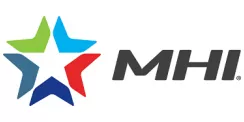MHI was incorporated in 1945 with the objective of serving its members and promoting the industry at large. In 1948, MHI created the National Material Handling Show which was later named ProMat. This event grew into MHI's signature event.
Also in the early years of MHI, sections or groups were formed from within the Membership or through affiliation within MHI to better represent specific producing sectors (examples being – Industrial Trucks, Cranes, Hoists, Monorails, Racks and Shelving, Loading Dock Equipment, Lift Equipment and Conveyors). These groups still serve the industry today.
By the late 1980s, the association took some bold but exciting steps to evolve the organization, including a move from Pittsburgh, PA to Charlotte, NC and the association changed its name to the Material Handling Industry of America or MHIA.
The size of the organization with an international trade show demanded changes in the management structure that could efficiently tackle the incumbent technical, marketing, education, legal and fiduciary responsibilities of an industry association that had no equal. Along with these changes, the membership grew from few hundred companies to a number more than 3 times that, almost overnight.
As is the case in most industries, the material handling industry is a dynamic one with technology advancing and the needs of the market changing. While traditional equipment continues to be the mechanical backbone of material handling within the supply chain, it is now interfacing with automated storage and retrieval systems, automatic guided vehicles, bar coding, radio frequency directed technology, smart conveyor and sortation systems, smart cranes and monorail, robots and more sophisticated non-consumer packaging techniques.
■











